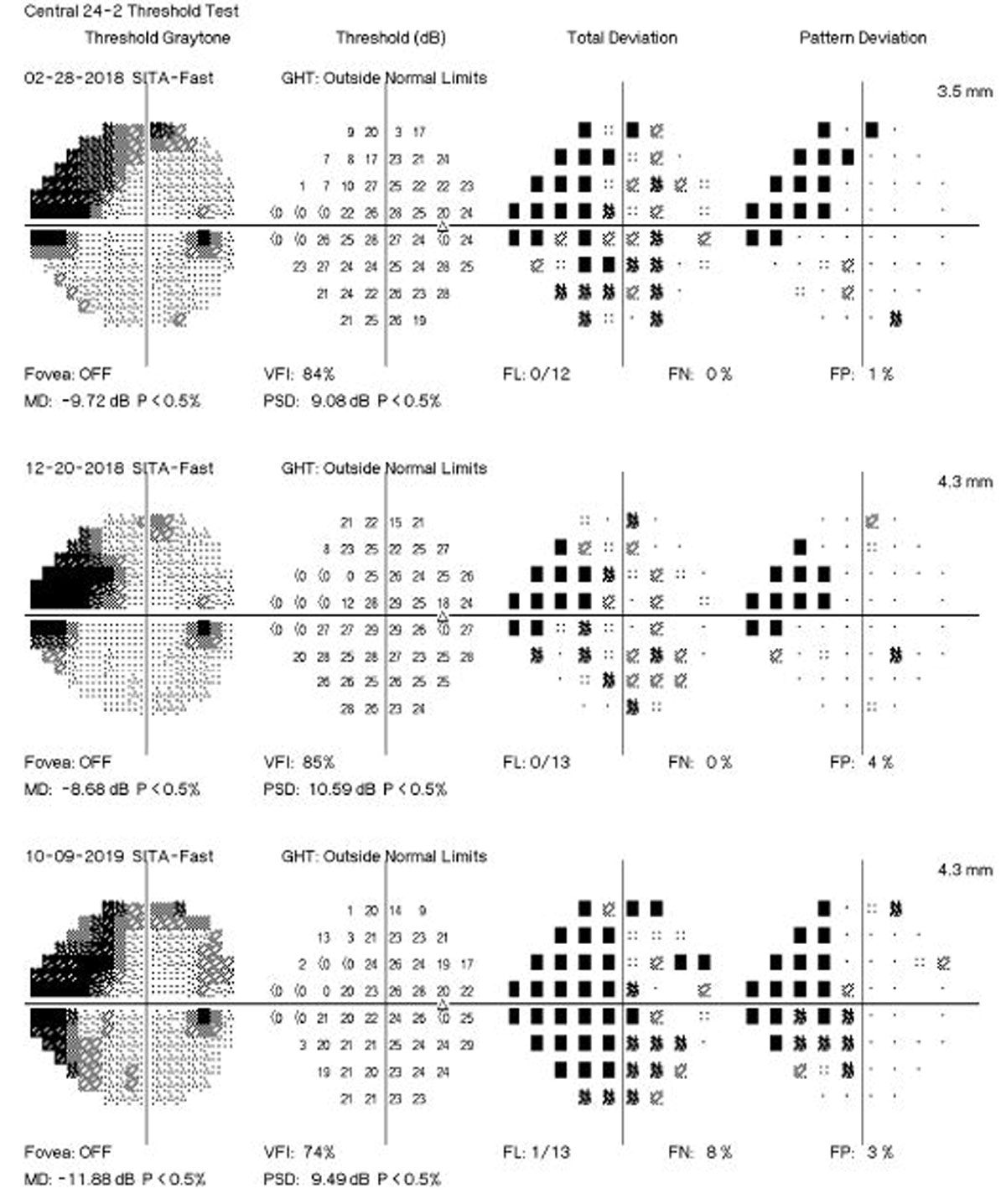 |
|
Authors of a recent study advocate for better metrics to track and anticipate central visual field loss, owing to the high rate of progression seen in their research. Photo: Brian D. Fisher, OD. Click image to enlarge. |
A new study published in Ophthalmology outlines research conducted to better understand how prevalent global and central visual field (VF) progression is in the population with glaucome. Composed of data from patients at a private ophthalmology clinic in Melbourne, Australia and individuals in two prospective longitudinal studies across three US sites, a total of 693 eyes were included.
Follow-up took place over an average of 4.5 years, and the patients, who had glaucoma under routine care, had performed more than five reliable 24-2 visual field tests over one to five years. Rate of global mean deviation (MD) change over time and mean total deviation values of the 12 locations within the central 10° region (MTD10) were used as measures to determine progression rate.
From these measurements, the researchers determined that 12.5% and 11.7% of eyes based on the MD and MTD10, respectively, displayed less than -1.0dB/year progression. This rate is defined as fast progression for MD values. An even greater 29.0% of eyes showed less than -0.5dB/year progression on MTD10, indicating a rate of decline in the central 10° region.
The researchers explain that this study is the first to report specifically on central VF progression in those with routinely cared-for glaucoma. They additionally point out that the change in magnitude observed centrally is likely to lead to a greater degree of functional impairment.
For practical consideration, the authors relate that “the findings of this study underscore the need for device manufacturers to consider incorporating a simple-to-derive metric of mean central visual sensitivity in their progression analysis software to aid clinical management.” This is because the current lack of such a metric highlights the clinical importance and need to pay attention to the central VF when assessing progressive changes qualitatively, as evidenced by their findings.
They further emphasize that there is a notable proportion of glaucoma patients quickly progressing, even under routine care. While fast progression is often defined as less than -1 dB/year change in global MD, they do note that functional disability could occur with the better eye at an MD of -6 dB. Thus, slower visual field rates of progression could be considered fast as well, when happening in the better eye.
The authors of the study bring attention to how this can benefit practicing clinicians. As they believe, “these findings underscore the importance of assessing central vision in the clinical management of glaucoma, and the need for new therapies for the notable proportion of fast progressors to prevent functional disability.”
Jackson AB, Martin KR, Coote MA, et al. Fast progressors in glaucoma: prevalence based on global and central visual field loss. Ophthalmology. 2023. [Epub ahead of print]. |


